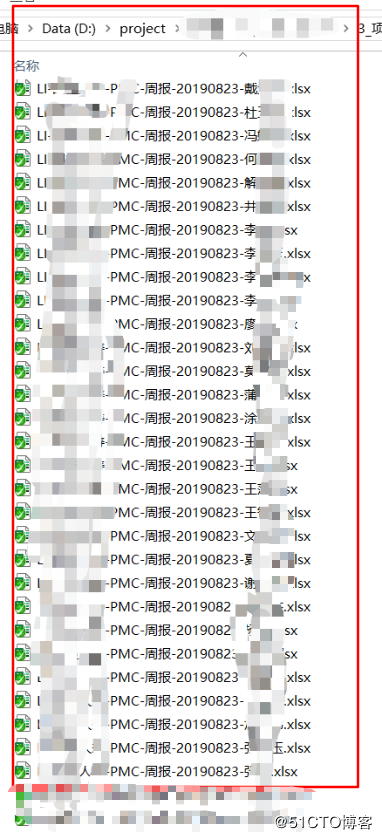python中的字典操作及字典函数
字典
dict_fruit = {'apple':'苹果','banana':'香蕉','cherry':'樱桃','avocado':'牛油果','watermelon':'西瓜'}
字典的操作
#字典的遍历方式
#默认遍历(遍历key)
for value in dict_fruit:
print(value)
'''''
遍历出的值:
watermelon
apple
cherry
avocado
banana
'''
#使用key遍历(与默认遍历一样)
for key in dict_fruit.keys():
print(key)
'''''
遍历出的值:
watermelon
apple
cherry
avocado
banana
'''
#使用value遍历
for value in dict_fruit.values():
print(value)
'''''
遍历出的值:
苹果
牛油果
香蕉
西瓜
樱桃
'''
#使用key,value遍历
for key,value in dict_fruit.items():
print(key+'--->'+value)
'''''
遍历出的值:
avocado--->牛油果
apple--->苹果
banana--->香蕉
cherry--->樱桃
watermelon--->西瓜
'''
#创建字典
#使用dict()
res = dict(brand = '品牌',size='尺码',color='颜色')
print(res,type(res))
'''''
res结果:
{'size': '尺码', 'brand': '品牌', 'color': '颜色'} <class 'dict'>
'''
#使用zip()和dict()
keys = ['1','2','3','4','5']
values = [1,2,3,4,5]
res = dict(zip(keys,values))
print(res,type(res))
'''''
res结果:
{'3': 3, '4': 4, '1': 1, '2': 2, '5': 5} <class 'dict'>
'''
#字典的推导式
res = {k+'的中文是'+v for k,v in dict_fruit.items()}
print(res)
'''''
res结果:
{'watermelon的中文是西瓜', 'avocado的中文是牛油果', 'banana的中文是香蕉', 'cherry的中文是樱桃', 'apple的中文是苹果'}
'''
字典的函数
#清空字典
test1 = {1:'1'}
test1.clear()
print(test1)
'''''
test1结果:
{}
'''
#复制字典(复制成一个新字典)
test2 = {2:'2'}
test2_copy = test2.copy()
print(test2_copy)
'''''
test2结果:
{2: '2'}
'''
#使用指定的key和value制作一个字典
list_test = ['a','b','c']
test3 = {}.fromkeys(list_test,'ojbk')
print(test3)
'''''
test3结果:
{'a': 'ojbk', 'b': 'ojbk', 'c': 'ojbk'}
'''
#将一个字典转化为二级容器(中间容器)
res = dict_fruit.items()
print(res,type(res))
'''''
res结果:
dict_items([('avocado', '牛油果'), ('apple', '苹果'), ('banana', '香蕉'), ('watermelon', '西瓜'), ('cherry', '樱桃')]) <class 'dict_items'>
'''
#将字典的key组成新的容器
res = dict_fruit.keys()
print(res,type(res))
'''''
res结果:
dict_keys(['watermelon', 'cherry', 'avocado', 'apple', 'banana']) <class 'dict_keys'>
'''
#将字典的value组成新的容器
res = dict_fruit.values()
print(res,type(res))
'''''
res结果:
dict_values(['牛油果', '香蕉', '樱桃', '苹果', '西瓜']) <class 'dict_values'>
'''
#根据key删除字典中的数据
test4 = {1:'1',2:'2',3:'3'}
test4.pop(2)
print(test4)
'''''
test4结果:
{1: '1', 3: '3'}
'''
#依次弹出(删除)字典中的数据
test5 = {1:'1',2:'2',3:'3',4:'4',5:'5'}
test5.popitem()
print(test5)
test5.popitem()
print(test5)
test5.popitem()
print(test5)
'''''
test5依次结果:
{2: '2', 3: '3', 4: '4', 5: '5'}
{3: '3', 4: '4', 5: '5'}
{4: '4', 5: '5'}
'''
#更新dict中的数据(更新一个不存在的key时,可用于添加新数据)
test6 = {'super':'Eric','ssuper':'Cbabe','sssuper':'Gogo','supreme':'wiz333'}
#更新数据
test6.update(super='Eric-LPL')
print(test6)
#添加数据
test6.update(niceboy='Bigmao')
print(test6)
'''''
test6依次结果:
{'ssuper': 'Cbabe', 'supreme': 'wiz333', 'sssuper': 'Gogo', 'super': 'Eric-LPL'}
{'ssuper': 'Cbabe', 'supreme': 'wiz333', 'niceboy': 'Bigmao', 'sssuper': 'Gogo', 'super': 'Eric-LPL'}
'''
#获取dict中的数据(使用key获取)
test7 = {1:'1',2:'2',3:'3',4:'4',5:'5'}
res = test7.get(1)
print(res,type(res))
'''''
test7结果:
1 <class 'str'>
'''
#给dict添加数据(setdefault,不能用于更新数据)
test8 = {1:'1',2:'2',3:'3',4:'4',5:'5'}
test8.setdefault(6,'6')
print(test8)
'''''
test8结果:
{1: '1', 2: '2', 3: '3', 4: '4', 5: '5', 6: '6'}
'''
总结
以上所述是小编给大家介绍的python中的字典操作及字典函数,希望对大家有所帮助,如果大家有任何疑问请给我留言,小编会及时回复大家的。在此也非常感谢大家对【听图阁-专注于Python设计】网站的支持!
